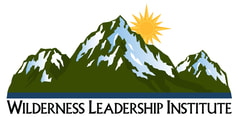Snowpack Summary March 17, 2023
Posted by Allen Giernet @ 6:30 am (this summary expires in 24 hours)
This summary applies to backcountry areas only.
The Bottom Line –
Firm icy conditions will present our most common problem in So Cal. Slide for life scenarios will be possible on all aspects. With overnight temperatures dipping below freezing for the past couple of days and a moisture laden snowpack icy surface conditions will be likely. Bring the proper equipment to manage this hazard and avoid steep terrain if your not confident in your skills to travel these surfaces. Afternoon warming will bring some softening and Loose Wet avalanches may become possible on sun exposed slopes.
Please share your observations with us at the avalanche center Submit Reports page.
Posted by Allen Giernet @ 6:30 am (this summary expires in 24 hours)
This summary applies to backcountry areas only.
The Bottom Line –
Firm icy conditions will present our most common problem in So Cal. Slide for life scenarios will be possible on all aspects. With overnight temperatures dipping below freezing for the past couple of days and a moisture laden snowpack icy surface conditions will be likely. Bring the proper equipment to manage this hazard and avoid steep terrain if your not confident in your skills to travel these surfaces. Afternoon warming will bring some softening and Loose Wet avalanches may become possible on sun exposed slopes.
Please share your observations with us at the avalanche center Submit Reports page.
Firm and Icy Surfaces firm and icy surfaces can cause long slide for life scenarios. Travel can be difficult to vary dangerous. Self arrest may be difficult to impossible. Micro spikes are not recommended for these conditions. Ice Axe and Crampons with proper training and skill are necessary tools for travel in these conditions. A slip and fall on these surfaces can lead to a long slide with tragic results.

Loose Wet avalanches are the release of wet unconsolidated snow or slush. These avalanches typically occur within layers of wet snow near the surface of the snowpack, but they may quickly gouge into lower snowpack layers. Like Loose Dry Avalanches, they start at a point and entrain snow as they move downhill, forming a fan-shaped avalanche. Other names for loose-wet avalanches include point-release avalanches or sluffs. Loose Wet avalanches can trigger slab avalanches that break into deeper snow layers.
General Summary
#1 Firm and Icy Surfaces – Snow surfaces will have had time to refreeze with low overnight temperatures for the past couple of nights. Fast firm surface conditions will be likely on all aspects at all elevations except possibly the highest peaks that remained above rain line. Be prepared with crampons and ice axe with the sills to use them for travel in steep terrain. A slip and fall in these conditions can produce hazardous results with dire consequences. Remember the majority of rescues and fatalities in our winter mountains are due to these type of conditions. Be prepared and don’t put yourself or others at risk.
#2 Loose Wet avalanche – Small wet loose avalanches could be possible as the day warms and sun effects the slopes. This may develop on Southerly aspects especially South through Southwest to West during the day. Be mindful of firm surfaces becoming soft and sinking in to boot top depth. Watch for roller balls and pinwheels developing through the day as indicators that snow is softening and becoming moist. Should you encounter these conditions move to terrain sheltered from the sun or lower angle slopes below 35°.
Outlook – Cold nights and moderate days for the weekend will maintain firm surface conditions as the main problem. Another storm is forecast to move in sometime Monday with lower elevation snow lines for Tuesday into Wednesday. Expect dust on crust conditions with possible storm slab and wind slab problems developing on Tuesday if snow amounts materialize as forecast at this time. Rain on snow will be likely below 7,000’.
Exercise caution if venturing out into the mountains and use avalanche protocols, travel with a partner and bring your beacon, shovel and probe.
Please share any information when you are out in the mountains. Even a photo is helpful. Submit observations to Submit Reports page.
#1 Firm and Icy Surfaces – Snow surfaces will have had time to refreeze with low overnight temperatures for the past couple of nights. Fast firm surface conditions will be likely on all aspects at all elevations except possibly the highest peaks that remained above rain line. Be prepared with crampons and ice axe with the sills to use them for travel in steep terrain. A slip and fall in these conditions can produce hazardous results with dire consequences. Remember the majority of rescues and fatalities in our winter mountains are due to these type of conditions. Be prepared and don’t put yourself or others at risk.
#2 Loose Wet avalanche – Small wet loose avalanches could be possible as the day warms and sun effects the slopes. This may develop on Southerly aspects especially South through Southwest to West during the day. Be mindful of firm surfaces becoming soft and sinking in to boot top depth. Watch for roller balls and pinwheels developing through the day as indicators that snow is softening and becoming moist. Should you encounter these conditions move to terrain sheltered from the sun or lower angle slopes below 35°.
Outlook – Cold nights and moderate days for the weekend will maintain firm surface conditions as the main problem. Another storm is forecast to move in sometime Monday with lower elevation snow lines for Tuesday into Wednesday. Expect dust on crust conditions with possible storm slab and wind slab problems developing on Tuesday if snow amounts materialize as forecast at this time. Rain on snow will be likely below 7,000’.
Exercise caution if venturing out into the mountains and use avalanche protocols, travel with a partner and bring your beacon, shovel and probe.
Please share any information when you are out in the mountains. Even a photo is helpful. Submit observations to Submit Reports page.
General Mountain Weather Forecast |
Weather Page Link
Click on the links below for the latest information
Click here for this Season's Snow Pack Summaries
To better understand the challenges and potential variability over the large area we are producing information for please read our Snowpack Summary - Format and Limitations
Disclaimer:
This Bulletin is designed to generally describe conditions where local variations always occur. Travelers are advised to exercise caution and make slope specific evaluations. As always, please treat this bulletin with appropriately guarded skepticism and make your own assessments. Help to provide more information to the community by reporting your observations
This Bulletin is designed to generally describe conditions where local variations always occur. Travelers are advised to exercise caution and make slope specific evaluations. As always, please treat this bulletin with appropriately guarded skepticism and make your own assessments. Help to provide more information to the community by reporting your observations
Latest Observtions
Click on the observation to go to the full report
|
Observation type -
Snowpack Location - Mt. San Antonio Date (yyyymmdd) - 20230309 Comment - We left Manker Flat area at 5:15am and reached the top of Mt. San Antonio (Baldy) at about 10:30am. We ascended mostly via crampons as the snow was still a bit too iced for skinning. No recent avalanches were observed on the S face of "Baldy Bowl" during our ascent on S face. No cracking, woomfing, or hollowness was observed during our ascent on S face. At the top of Mt. San Antonio, we observed moderate to strong winds. Although no snow was being actively transported during our observation, we witnessed heavily wind affected snow at the top of the ridge and peak. Some wind loading was observed on some aspects at the peak elevation, but our main concern was ice. Blue ice was observed on the ridge around the peak. Some avalanche activity was observed on distant extreme terrain on NE aspects off Telegraph and Ontario Peak. We descended down the NW face of Mt. San Antonio. We avoided the wind loaded leeward slopes, opting instead for barely edgeable ice crust for the first 100 feet or so. This ice eventually yielded to soft wind effected snow. We eventually came to the crux 3/4 of the way down and opted to down climb with crampons and axes. We did observe one small area R1? of snapped trees (but no other debries, indicating an older avalanche) on an E facing aspect below treeline. After completing descent, we climbed up the R ridge, gaining the col between San Antonio and Harwood and skied down the S face of San Antonio. No wet slide activity was observed on our descent down the S face. These observations occurred before a rain/snow event on March 10th and 11th. |
Observation type
Snowpack Location - Mt. Baden Powell Date (yyyymmdd) - 20230305 Comment - Road Mount Baden Powell right after the big storm and got one really good day of powder. Then came back two days later and the sun had already baked it and re-froze a bad firm crust on the top :( Firm snow and crust exists all the way up to 8000 feet or more. Noticed a slightly weak layer about 12 inches deep in the snow pack and did some testing and concluded it is not a major concern, though it did slide with extremely isolated and with extreme pressure on the snow pack. |
Observation type
Snowpack Location - Wrightwood Date (yyyymmdd) -20230301 Comment The epic snow event of 2023 has delivered as promised, and more. Below are some contemporaneous notes from observations at/near approximately 6,400ft in the Swarthout Valley. - Very cold, dry snow fell on 2/23 night along with gusty winds. Pockets of slabby windboard were observed on leeward slopes. - Friday 2/24 morning through Saturday 2/25 afternoon was the main event, with consistent snowfall rates of 6-9cm/hr. Best guess is snowfall ratios were 12-15:1. Totals were approx. 1.5 meters. Likely 2-3m in the high country. - Sunday 2/26 was clear and mild, with slightly above-freezing temps up to ~7000ft. Solar aspects were turning to hot pow and mank. Some - Snow and gusty winds resumed evening of 2/28, increasing in intensity overnight. By Wednesday 3/1 there was 20-30cm of new snow, with local pockets of 40-50cm in wind-loaded areas. - Several D1.5 natural avalanches were spotted on ~40deg slopes around 7300ft on 2/26. - I observed several large “whumphs” while shoveling snow from my car onto the adjacent slope, presumably from the added load. - Tl;dr – a LOT of snow has fallen in the past week, on top of variable surfaces ranging from bare earth to refrozen corn to old facets. We are now faced with a much deeper and more complex snowpack than is typical for the SoCal mountains. Roads are virtually impassable in mountain towns, so please respect residents by obeying CalTrans and CHP closures. |
Observation type
Snowpack Location - Wrightwood Date (yyyymmdd) - 20230225 Comment - Ventured out with a conservative route plan as this mega storm was winding down to see how much fell and what the snowpack is like. My partners and I toured to a ~25deg stand of oak and pine that would almost certainly never be skiable in normal years. Snow in our low-ish elevation tour seems right side up with high quality cold, dry powder rounding out the storm. Pit at ~6500ft on a 25deg North slope. 110cm deep 0-5 knife hard ice (remnants from earlier this winter) 5-55 4F 55-110 fist CT14 at 40cm, Q3 shear Snow hasn't bonded well to the icy/corn base but wasn't reactive in column test We did observe a D1 dry loose slide on a small ~40deg slope on our return home. However, there were not other observed signs of instability during our tour. |
General Caution
You should always use safe terrain management and carry avalanche rescue equipment in the backcountry. Most avalanches are triggered by someone in the party or the victim. Practice with your rescue gear often and be prepared should the worst happen. Though we do not have an avalanche forecast center in this area as of yet, the information posted and shared here as well as the resources available on this site will help to make informed decisions for your backcountry travels. Use avalanche forecasts in your travels wherever available and be aware that avalanche ratings are general information. Elevation, location, geographic variability’s, slope aspect and angle all have effects on the particular area you travel in. This is only one piece of the information you should use in your decision making process. There is no substitute for avalanche education, for more resources and information as well as education please refer to our resources page.
You should always use safe terrain management and carry avalanche rescue equipment in the backcountry. Most avalanches are triggered by someone in the party or the victim. Practice with your rescue gear often and be prepared should the worst happen. Though we do not have an avalanche forecast center in this area as of yet, the information posted and shared here as well as the resources available on this site will help to make informed decisions for your backcountry travels. Use avalanche forecasts in your travels wherever available and be aware that avalanche ratings are general information. Elevation, location, geographic variability’s, slope aspect and angle all have effects on the particular area you travel in. This is only one piece of the information you should use in your decision making process. There is no substitute for avalanche education, for more resources and information as well as education please refer to our resources page.






















